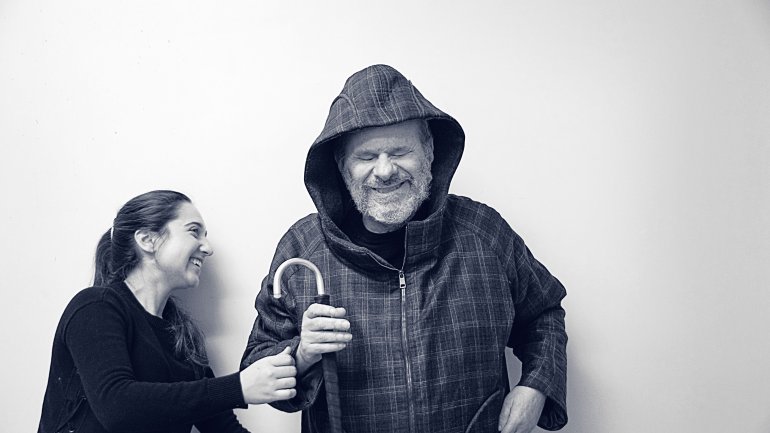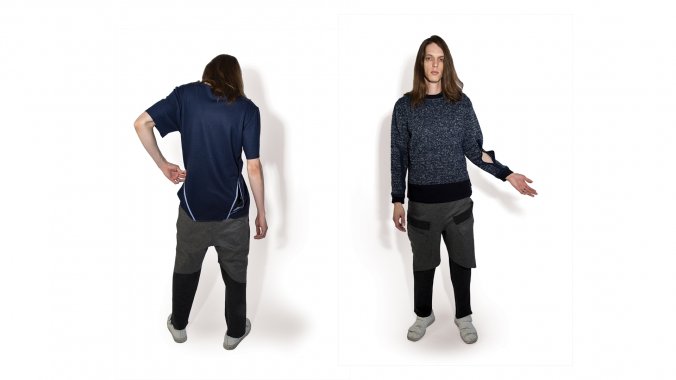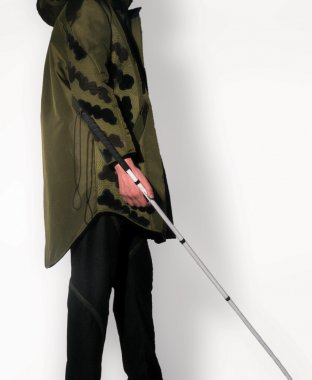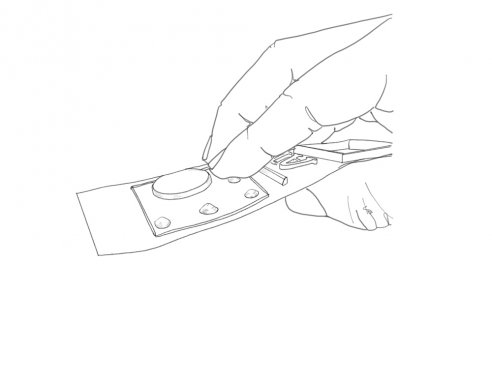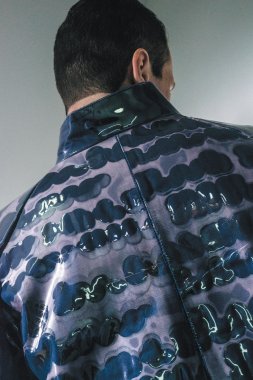Camila Chiriboga
Camila Chiriboga
When kidney surgery left Camila Chiriboga unable to dress herself for a couple of weeks, she realized how much independence lay in the simple act of putting on clothes. “I felt terribly vulnerable,” she remembers. “And then I realized how much it would affect the lives of people who actually have this challenge every single day.” She was a sophomore studying fashion design at Parsons School of Design, and the experience got her thinking about how she could use her skills to make a difference.
A series of classes on designing clothes for people with physical and medical needs helped her get started. “We collaborated with occupational therapists and engineers to holistically think of how we approach the body,” she says, “and how to develop innovative technology or processes to create the clothes.” For a client with cerebral palsy, Chiriboga made a custom coat that allows for a wider range of motion. She also sewed apparel with handy access points for people who use dialysis machines and insulin pumps.
For her senior thesis, Chiriboga created Ve°, a collection for people with visual impairment. In preparation, she spent months volunteering at a center for those with limited sight, learning how they navigate the world. She then worked closely with three center clients to design clothes for their specific needs. Zippered pockets help keep objects from slipping out unnoticed, a variety of textures adds nonvisual interest, and because every item is reversible, it’s never inside out. Chiriboga also created tags that describe the item’s color and other features when scanned with a smartphone. Without the tags, she says, people with visual impairment often must rely on others to dictate their style. Choosing clothing is important, she says; “it’s a reflection of yourself.”
Although Ve° was designed for people with low vision, Chiriboga, 23, emphasizes that the collection has wide appeal. “Anyone can use it,” she says. “It just has special features.”
After graduating in 2017, Chiriboga joined the LIO Innovation Lab, part of fashion conglomerate Global Brands Group. In the yearlong program, she worked on inclusiveness strategies for the company.
In September, she moved to Tokyo to join the design team at fashion company Uniqlo, where she hopes to become an intermediary between Japan’s aging population and the fashion industry. The work is about more than making attractive clothing for people, Chiriboga says. “It’s focusing on their lived experiences to create products they need.”
Dressing the Part
Must-have: “My favorite tool is a scissors. It allows you to transform anything and give it a new life. It is used during every single step of a garment, from ideation to final design.”
Comes by it honestly: Chiriboga grew up running through her father’s clothing factories. Her parents bought her a sewing machine when she was 8 years old – “the best gift they ever gave me,” she says.
In others’ shoes: For four months, Chiriboga dressed herself blindfolded as she worked on her collection for people with visual impairment. She learned that she selected clothes based on how they feel, rather than how they look.
Flora and fauna: Chiriboga’s upbringing in Ecuador has shaped her work. Her Ve° collection draws inspiration from the Amazon jungle, where animals and plants often communicate in nonvisual ways – “through sound, textures … even releasing different kinds of substances,” she says.


